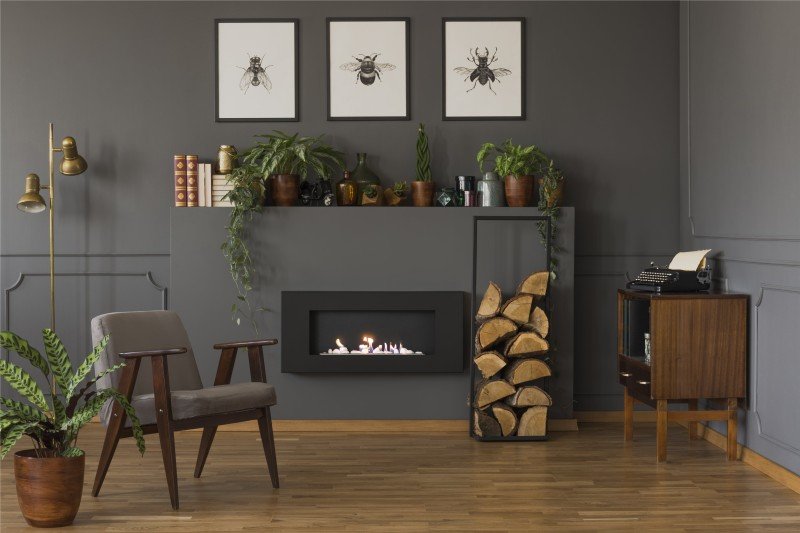How To Become A Prosperous Fireplaces If You're Not Business-Savvy

Fireplaces in the UK: A Comprehensive Guide
Fireplaces have long been an important part of British homes, providing both aesthetic beauty and functional heat. As Cozy Fireplaces turns cold, the appeal of a cozy fire beckons, changing any living space into a sanctuary. In this post, we will check out the various types of fireplaces offered in the UK, considerations for installation, maintenance tips, and answers to often asked questions about fireplaces.
Types of Fireplaces
When choosing a fireplace for a UK home, several choices are readily available, each with unique features and advantages. The following table summarizes the main types of fireplaces popular in the UK:
| Fireplace Type | Description | Pros | Cons |
|---|---|---|---|
| Open Hearth | Traditional fireplaces that burn wood or coal, offering a rustic feel. | Authentic atmosphere; excellent heat distribution | Less energy-efficient; requires chimney upkeep |
| Gas Fireplaces | Usage natural gas or propane; can be direct vent or ventless. | Immediate heat; easy to operate; cleaner burning | Preliminary setup expense; might require gas line |
| Electric Fireplaces | Mimic a flame using LED lights and supply heat through electrical power. | Safe; easy to set up; no flue needed | Less authentic; greater operating expense |
| Wood-burning Stoves | Closed-system fireplaces that burn logs, using high performance. | High heat output; eco-friendly when using sustainable wood | Minimal aesthetic compared to open hearth |
| Bioethanol Fireplaces | Eco-friendly choice that burns bioethanol, developing real flames. | No chimney required; flexible design options | Can be costly to run; minimal heat output |
Pros and Cons of Each Type
Open Hearth
- Pros:
- Provides character to any home.
- Efficient heat distribution due to open flames.
- Cons:
- Less energy-efficient and more smoke than modern options.
- Requires regular cleaning and upkeep of the chimney.
Gas Fireplaces
- Pros:
- Easy to control and run with the flick of a switch.
- Cleaner option with less soot accumulation.
- Cons:
- Requires a gas supply and setup costs can be high.
- May not supply the very same ambiance as a traditional fire.
Electric Fireplaces
- Pros:
- Simple setup with no chimney or flue needed.
- Can be found in numerous styles, looking like traditional choices.
- Cons:
- Lacks the realism of genuine flames and can become costly with continuous use.
Wood-burning Stoves
- Pros:
- Highly efficient and creates considerable heat.
- Sustainable resource when utilizing properly sourced wood.
- Cons:
- Requires additional area for log storage and routine upkeep.
Bioethanol Fireplaces
- Pros:
- Flexible placement due to no need for traditional venting.
- Clean-burning and minimal influence on indoor air quality.
- Cons:
- Can be less economical for continuous usage compared to gas or wood.
- Heat output is less reliable for larger areas.
Installation Considerations
When installing a fireplace in a UK home, a number of factors need to be taken into account:
- Building Regulations: Ensure compliance with regional building codes and security policies.
- Chimney and Flue: Determine the requirement for a chimney or flue system based on the type of fireplace chosen.
- Ventilation: Proper ventilation is important for safety, especially with gas, wood, and bioethanol options.
- Location: Consider the best area for the fireplace to make the most of heat distribution and visual appeal.
- Professional Help: Engaging an expert installer can make sure a safe and accurate setup customized to the specific type of fireplace.
Upkeep Tips
Routine upkeep of a fireplace is essential for both safety and performance. Follow these guidelines to keep your fireplace in peak condition:
- Chimney Sweeping: Have your chimney professionally swept at least when a year to prevent obstructions and decrease fire threat.
- Examine for Damage: Regularly examine for leaks, fractures, or damage, especially in gas and wood-burning fireplaces.
- Clean the Surroundings: Ensure the location around the fireplace is totally free from dust and flammable products.
- Check Carbon Monoxide Detectors: Test detectors routinely, particularly in homes with gas-burning home appliances.
- Shop Wood Properly: If utilizing a wood-burning range, shop wood in a dry location to decrease wetness content.
Regularly Asked Questions
What is the very best type of fireplace for a small space?
For small spaces, electric fireplaces or bioethanol designs are frequently suggested due to their smaller sized size, safety features, and visual appeals.
Are electric fireplaces cheaper to run than gas?
Electric fireplaces usually have a lower upfront cost, but depending upon electricity rates, they can be more costly to operate long term compared to gas.
Do wood-burning stoves require a lot of maintenance?
While they do need some upkeep, such as cleaning and regular chimney sweeps, many property owners discover that modern wood-burning ranges are effective and relatively low upkeep compared to traditional open hearths.
Can I install a gas fireplace myself?
While some property owners might try DIY installation, it is extremely a good idea to hire an expert for gas fireplace setups due to safety issues and regulative compliance.
How can I take full advantage of the heat output of my fireplace?
To optimize heat output from any fireplace, consider the following:
- Keep doors and windows closed during usage.
- Usage heat-efficient logs or fuels.
- Ensure proper air flow around the fire.
- Utilize fans or blowers that can circulate warm air throughout the space.
Fireplaces remain a cherished component within UK homes, offering warmth, charm, and a welcoming atmosphere. Provided Contemporary Fireplaces UK of options and their unique functions, homeowners can select the perfect fireplace to complement their living space while making sure safety and efficiency. With Outdoor Fireplaces UK and a clear understanding of the setup requirements, anybody can take pleasure in the appeal and convenience of a fireplace for many years to come.

